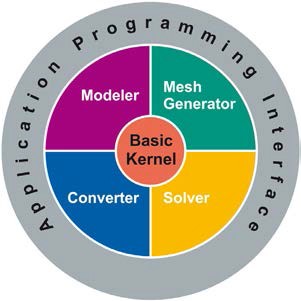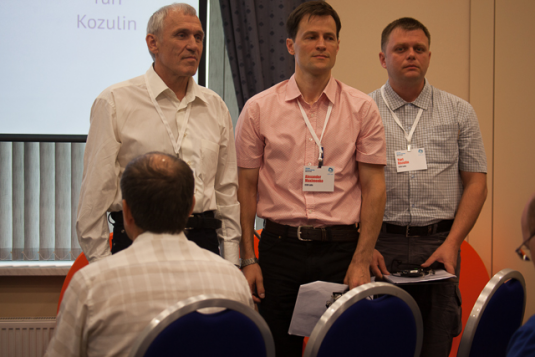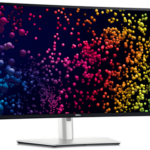New geometry kernels come from Russia to challenge traditional modelers and enable upstarts.
By Kathleen Maher
As COFES Russia kicked off in St. Petersburg last week, Russian CAD provider Ascon showcased its home-grown C3D geometry kernel, which was introduced as licensable technology in May 2012. Ascon develops and sells Kompas 3D, a 3D CAD product used widely in Russia.
C3D is being offered to other companies that might want to build complementary products for Kompas 3D or develop their own CAD product. C3D arrives at an interesting time for CAD geometry engines. Dassault is now offering its CGM kernel, which underlies its flagship products Catia 5 and Catia 6 for licensing through its Spatial division. Spatial also licenses one of the most widely used geometry kernels, ACIS.
In addition to C3D, Russian mathematicians are working on the aptly named Russian Geometry Kernel (RGK), with the backing of the Russian government. The RGK project is being led by contract developers Ledas, and much of the work is happening at Stankin, the Moscow State Technological University. The RGK project seems to be coming close to fruition after two years of work.
Ancient history
Currently, there are two major geometry kernels offered for license: Spatial’s ACIS, which is owned by Dassault, and Siemens’ Parasolid. Both modelers were built in 1985 or so and were widely adopted by CAD companies through the nineties. Parasolid is the core modeling engine for Dassault SolidWorks as well as Siemens NX and Solid Edge, Bentley MicroStation, and Nemetschek Vectorworks. ACIS is used in a variety of products. It was the core modeler in AutoCAD, and it still is used for a variety of products including SpaceClaim, Bricscad, and Kubotek. As it was developing Inventor, Autodesk was working on its ShapeManager (ASM) kernel as a fork off of ACIS 7.0. Autodesk now builds its products on ASM. As an interesting aside, Autodesk was sued by Dassault for breach of contract as a result of its work on ASM using ACIS. Dassault eventually lost the suit because Autodesk’s original deal with Spatial gave Autodesk the rights to make changes.
Dassault would like to see CGM become a major contender in the licensing sweepstakes, and Dassault has made it clear it would like to see SolidWorks as a CGM product—but it has to move carefully to maintain support for its large base of SolidWorks users. Meanwhile, the large companies are showing a preference for proprietary engines. PTC has its own Granite engine and Nemetschek builds most of its own technology in-house as well.

It’s not as if these newer geometry kernels are actually all that new. Development for Dassault’s CGM, and Ascon’s C3D, started in the mid-nineties. Autodesk’s ShapeManager was developed in 2001.
Analyst Ken Versprille of CPDA and CIMdata has been deep in the so-called kernel wars. As head of R&D at CAD pioneer Computervision, he oversaw the development of CADDS, which is now a PTC product. Versprille talked a little bit about the market for geometry kernels today at the C3D announcement in St. Petersburg. He said a number of small independent companies and organizations have built geometry kernels, but he notes the CAD world is entering a new era, as new geometry kernels become available. Versprille cited several factors helping to drive the demand for new engines. CAD vendors are challenged to take advantage of parallel computing. The explosion of interest in direct manufacture methods, including CAM, laser cutting, 3D printing, and for FEA, are also driving an interest in new approaches to creating 3D models for manufacture. Versprille is also interested in the ability of CAD programs to accommodate point-cloud data. He sees this as an important capability for CAD systems of the future.

C3D
The C3D kernel was developed by a team at Ascon led by Nikolai Golovanov. It was developed using C++ and written in Visual Studio. Work was begun on the kernel in 1995 for Ascon’s Kompas 3D. Today, Ascon says they have a user base of 57,000, most of them in Russia. There is obviously already a sound base for C3D as a tool for building complementary products and add-ons for Kompas 3D. The C3D business team is being led by Oleg Zykov.
Ascon is fiercely proud of its technology and of the abilities of Russian mathematicians to deliver a better geometry kernel to the world. Golovanov says the speed and efficiency of the kernel affect the performance of products built on top of it.
Zykov says the product development for C3D is ongoing with new improvements to come. For example, C3D has ambitions to do a better job of creating a modeling engine that can take advantage of the parallelism in modern processors. So far, legacy CAD has lagged far behind on this front. In addition, C3D is being developed to better enable products for direct modeling as well as constraints-based modeling.
At the event in Russia, Golovanov told the audience that the C3D kernel is significant because it is the most full-featured modeler available. In addition to the 3D modeler, the engine includes 2D drawing and sketching, 3D surfaces and solid modeling, parametric constraints, and conversion to most major formats.
Golovanov says the team is continuing to add improvements to the C3D modeler. In particular, he said they are concentrating on the kernel’s direct modeling capabilities to enable hybrid workflows. They are also improving it to import STL and VRML. Currently, C3D reads in STEP, IGES, X_T (Parasolid), and SAT (ACIS) and writes STEP, IGES, X_T (Parasolid), SAT (ACIS), STL, and VRML. C3D supports Windows 32-bit and 64-bit and Linux 64-bit. The people working at this emerging company see C3D as the enabler of a new generation of design tools for smaller companies. They are offering generous levels of support in addition to a free three-month evaluation period. They have early customers. In addition to use in its parent company’s Kompas 3D product, C3D is being used by Russian Esprit CAM distributor ZAO “LO CNITI” and as a furniture design tool at the Bazis Center.
The RGK
The C3D kernel is not the only kernel being built in Russia. There is also a government mandate to build the Russian Geometry Kernel, RGK, a B-rep (boundary representation) modeler, which also supports NURBS curves and surfaces. The description of the RGK says it’s been optimized for complex operations including using special types of curves and surfaces designed for the kernel, and as a result, it is faster and more precise. The RGK is being developed by Russian mathematicians at the Moscow university, and like the C3D modeler, it has support for multi-threading and GPU acceleration. It’s based on OpenCL as the library for GPU support. The RGK supports Windows 32-bit and 64-bit and also Linux platforms. The emphasis for the RGK kernel is parallelism. The developers say the RGK can create models using a variety of approaches with support for solids, surfaces, and wireframe modeling. The application can work simultaneously with the different types of data within the same model. The kernel also supports visualization techniques for models including model tessellation and mesh generator functions. This, of course, is another area where the support for GPUs becomes important.
Our take
The evolution of modelers from Russia portends a new generation of design tools. Although the Russian developers would like to see their engines adopted worldwide, the primary goal seems to be to enable Russian companies to build world-class products for their growing domestic market. It’s going to take time for the new kernels to see wide acceptance, if ever. Ken Versprille points out companies have to be convinced technology providers will be around for the long haul before they commit. However, Ascon has been growing rapidly and gaining respect, thanks to the development of its Kompas 3D and additional tools. Ascon has ambitions to build new products for BIM and PLM as well. There is considerably more information available on Russian development for geometry kernels and design tools at the IsiCAD portal. Dmitry Ushakov wrote a detailed article on the Russian Geometry Kernel, and he provided a useful table of the kernels being used by the major vendors. The length of time it has taken for CAD companies to re-architect their software to better take advantage of the available hardware is itself a testament to the difficulty of the task. If it was easy, it would be done by now.





